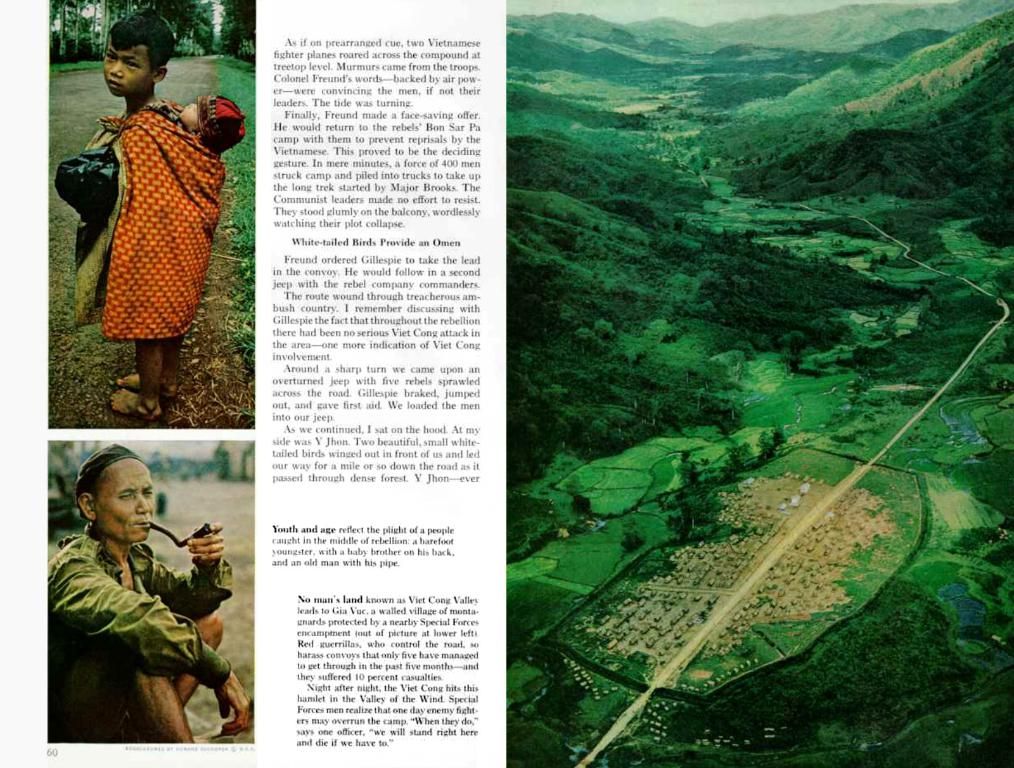Stunning Visuals Unveil Historic Rock Citadel of Sigiriya in 10 Captivating Shots
Climbing the ancient, monumental Sigiriya Rock Fortress—a whopping 1,200 steps high—in the Northern Matale District of Dambulla, Sri Lanka, can take anywhere from 1.5 to 3 hours, but it's worth every single step.
Upon reaching the summit, you'll be rewarded with a breathtaking panoramic view of the surrounding landscape. Dubbed Sigiriya, or Sinhagiri ("the Lion Rock"), this ancient "sky city" is an overlooked marvel compared to other famous wonders of the world.
The rock fortress serves as a mesmerizing confluence of human ingenuity and nature's raw power. In the past, it was used as a royal palace, a rock fortress, and even a Buddhist monastery that stood tall until the 14th century.
According to ancient Sri Lankan chronicles like the Culavamsa, King Kashyapa (477–495 CE) chose this awe-inspiring site as his new capital, embarking on an unprecedented engineering feat. The king decided to reside in a palace built on top of the colossal rock, enhancing its sides with stunning, colorful frescoes.
At the base of the rock, halfway up the side, lies a massive lion-shaped gateway. This structure, referred to as Sīnhāgiri, serves as a testament to the grandeur of this ancient royal capital.
Indeed, Sigiriya is widely acknowledged as one of the best-preserved examples of ancient urban planning, boasting symmetry, asymmetry, and a unique blend of human-made structures and natural landscape. Its architects cleverly interlocked geometric shapes with the surrounding environment, creating a breathtaking rock fortress that defies the odds.
Apart from its magnificent design, Sigiriya is also home to intricate water-retaining structures and sophisticated hydraulic systems, some of which remain functional to this day. The summit features a ruined palace surrounded by extensive gardens, fortifications, and a canal system replete with fountains.
Famous for its mirror-like sheen, the Mirror Wall was once so polished that it reflected visitors' images. The secret ingredient? A unique plaster composed of lime, egg whites, and honey. Centuries later, visitors have etched around 700 verses onto the wall, making Sigiriya one of the oldest tourist attractions in the world.
People who have left their mark on Sigiriya's rock surfaces have shared their thoughts on love, inspiration, and life experiences. Some scholars believe that Sigiriya may be the "Alakamandava" (the City of the Gods) built more than 5,000 years ago by King Kubera. Others theorize that in the third century BC, Sigiriya served as a monastery before being transformed into a royal palace in the fifth century by King Kasyapa, also known as King Kashyapa.
While information about the architect of Sigiriya is limited, Hindu mythology offers insight into the importance of the designs and structures that went into creating the stunning rock fortress. Maya Danava—a great king and architect–is said to have designed magnificent abodes, earning his name attached to the magnificent Mayasabha (the Hall of Illusions) in the epic Mahabharata.
Archaeological evidence suggests that the area surrounding Sigiriya has been inhabited since ancient times. Numerous rock shelters and caves at the site show signs of habitation dating back to the third century BC, with the fortress itself exhibiting evidence of human presence dating back over 5,000 years.
The Sigiriya Rock Fortress was not discovered by the outside world until 1831, when Major Jonathan Forbes discovered the bush-covered summit during his time in the British army. It took another several decades before scholars began visiting the site. Notable among them is H.C.P. Bell, a British civil servant, and commissioner in the Ceylon Civil Service born in British India, who conducted extensive studies on Sigiriya in the 1980s.
Join our active Telegram community to participate in engaging discussions and be eligible for amazing giveaways: t.me/our website!
In the realm of history and mythology, Sigiriya Rock Fortress stands as an extraordinary fusion of human lifestyle and natural travel destinations, serving as a testament to ancient Sri Lankan architecture. With mesmerizing water-retaining structures and intricate frescoes that echo the tales from Hindu mythology, Sigiriya is not only a magnificent example of urban planning but also a breathtaking travel and lifestyle experience for modern visitors.




